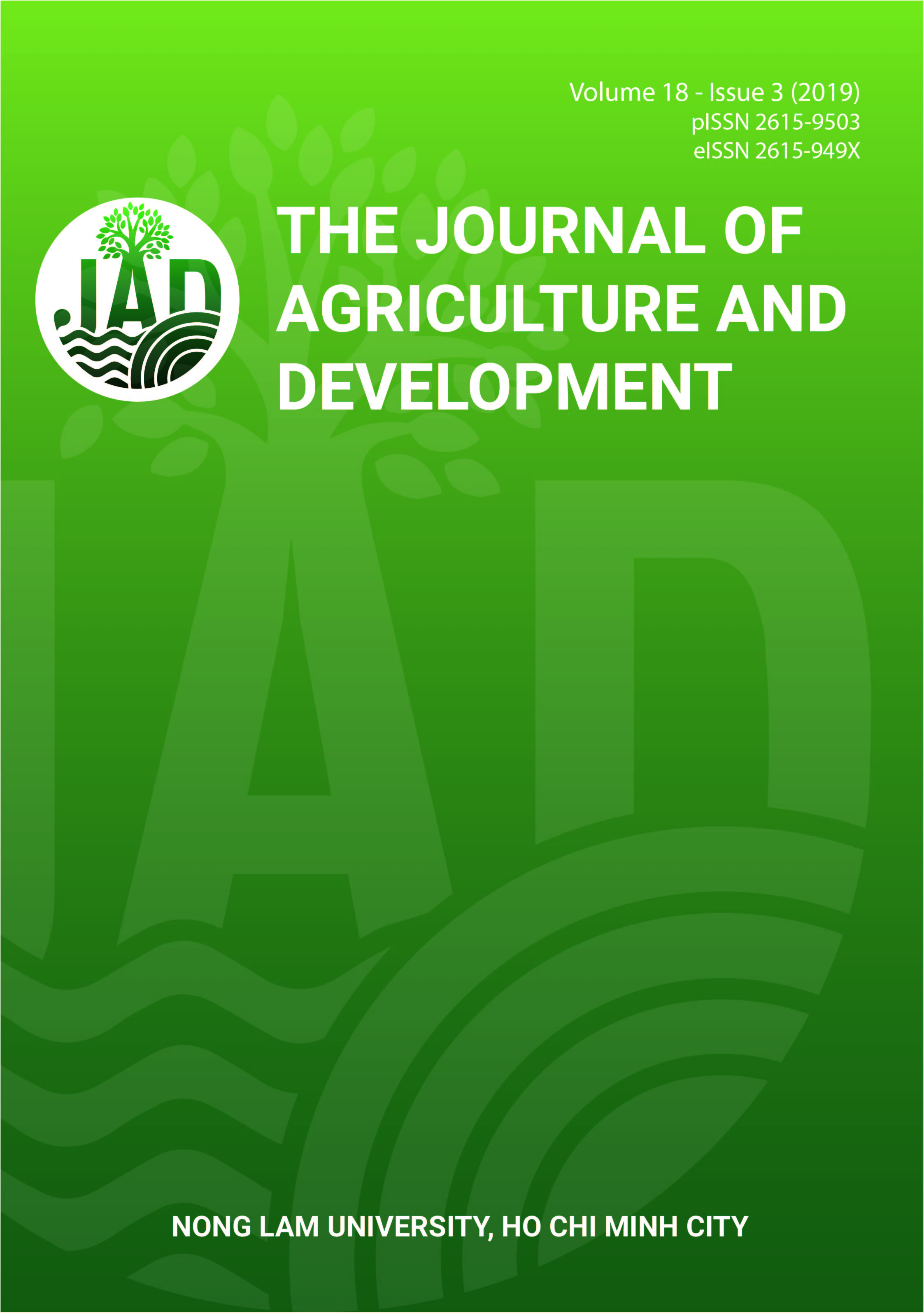Mould resistance of the bambooThyrostachys siamensis treated with chitosan
Main Article Content
Abstract
In this study, mould resistance of the bamboo species Thy-rostachys siamensis treated with chitosan was tested underlaboratory and praxis condition. In the laboratory experiment, bamboo specimens were treated with various solutions of bothlow molecular weight chitosan (LMW) and medium molecularweight chitosan (MMW) at concentrations of 1, 2 and 3% andChitosan-copper complexes (CC) at concentrations of 2, 4 and 6%. Mould growth on the specimens was evaluated 1, 2, 4 and 8 weeks after they were exposed to the inoculation with a conidia mixture of six moulds isolated from bamboos. In field test, bamboo samples were treated with the effective formulations from the laboratory experiment. Evaluation of mould growth on the samples was done 1, 2, 4 and 8 weeks after exposure at the storage site of Bamboo company, Binh Duong. The results showed that treatments with chitosan (MMW) at the concentration of more than or equal to 3% and Chitosan-copper complexes at the concentration of more than or equal to 4% completely inhibited mould growth on the bamboo T. siamensis.
Article Details
References
BSI (British Standard Institution). (2005). Woodpreservatives-Determination of the preventive effec-tiveness against sapstain and mould fungi on freshlysawn timber-field test. DD CEN/TS 15082. BritishStandard Institution, London, UK: British StandardInstitution.
Chirkov, S. N. (2002). The antiviral activity of chitosan. Applied Biochemistry and Microbiology 3(8), 1-8. https://doi.org/10.1023/A:1013206517442
Gamal, R. El., Nikolaivits, E., Zervakis, G. I., Abdel-Maksoud, G., Topakas, E., & Christakopoulos, P.(2016). The use of chitosan in protecting wooden arti-facts from damage by mold fungi. Electronic Journalof Biotechnology 24, 70-78. https://doi.org/10.1016/j.ejbt.2016.10.006
Gorgija, R., Tarmian, A., & Karimic, A. N. (2014).Effect of chitosan on the mold resistance of woodand its surface properties. International Journal of Lignocellulosic Products 1(1), 39-49.
Kobayashi, T., & Furukawa, I. (1995). Wood-preservingeffectiveness of chitosan–metal salts against wood de-caying fungi. Journal Antibact Antifung Agents 23, 343-348.
Kumar, M. N. V. R. ( 2000). A review of chitin and chitosan applications. Reactive and Functional Polymers 46(1), 1-27. https://doi.org/10.1016/S1381-5148(00)00038-9
Larnoy, E., Eikenes, M., & Militz, H. (2006). Evaluationof factors that have an influence on the fixation of chi-tosan in wood. Wood Material Science 1(3-4), 138-145. https://doi.org/10.1080/17480270701200562
Liese, W., & Tang, H. T. K. (2014). Preservation anddrying of bamboo. In Liese, W. & K ̈ohl, M. (Eds.). Bamboo the plant and its uses (257-298). Hamburg,Germany: Springer.
Mekahlia, S., & Bouzid, B. (2009). Chitosan-copper (II)complex as antibacterial agent: synthesis, characteriza-tion and coordinating bond-activity correlation study. Physics Procedia 2(3), 1045-1053. https://doi.org/10.1016/j.phpro.2009.11.061
Schmidt, O., Wei, D. S., Liese, W., & Wollenberg, E.(2011). Fungal degradation of bamboo samples. Holz-forschung 65, 883-888. https://doi.org/10.1515/HF.2011.084
Sun, F., Chen, A., & Duan X. (2012). Mould-resistance ofbamboo treated with the compound of chitosan-coppercomplex and organic fungicides. Journal of Wood Science 58, 51-56. https://doi.org/10.1007/s10086-011-1223-9
Sun, F. L., Duan, X. F., Mao, S. F., & Wen, G. F.(2007). Decay resistance of bamboo wood treated withchitosan-metal complexes against the white-rot fungus Coriolous versicolor. Scientia Silvae Sinica 43, 82-87. https://doi.org/10.11707/j.1001-7488.20070414








